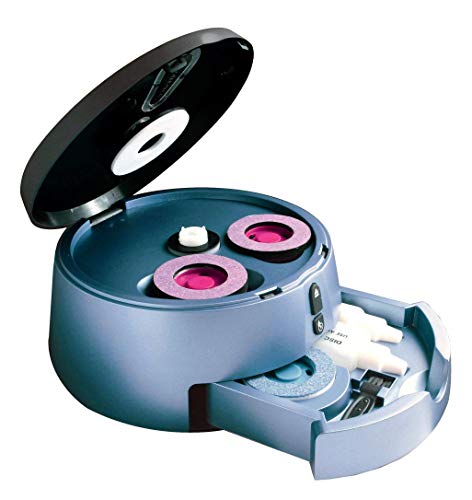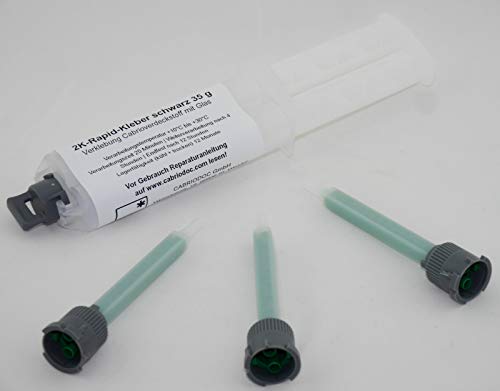Almost everyone who owns CDs has at least one scratched one in their collection CD, no matter how small the scratch.
In order to remove scratches from CDs, some manufacturers have developed so-called repair sets (or “disc repair sets”).
They are available in a wide variety of varieties. But can these "miracle cures" get your favorite CD back in shape so that the CD player can play it again without any problems?
HiFi–Online.net investigated! I got two repair kits from two different manufacturers. Candidate 1 is the CD/DVD Disc repair set from Hama, which advertises with a large sticker on the packaging: "removes scratches".
Candidate 2 is the CD/DVD Scratch Repair Kit from Fellowes, which also advertises the removal of scratches with a lettering, but is rather incomprehensible for people who do not like the English language very much ("Superior Cleaning Every Time ").
Contents
Best selling CD repair kits
First I would like to give you a brief introduction to the two products.
Hama CD/DVD Disc Repair Set
Hama, the accessory specialist for the electronics and multimedia industry, provides various repair sets for optical data carriers.
I chose the product with item number "00051299". This set includes a tube with 5 g special polishing paste and a polishing cloth.
This can be removed as soon as you have fought your way through the blister packaging. According to the manufacturer, the special paste is sufficient for 12 CDs to be repaired.
Fellowes CD/DVD Scratch Repair Kit
Since its inception in 1971, Fellowes has focused on helping employees store and manage information.
In addition to document shredders and archiving systems, Fellowes also offers cleaning products for Scout, keyboards and CDs. In the field of CD cleaning, on the other hand, Fellowes has only one product in its range, which considerably simplifies or restricts the selection - depending on how you look at it.
The set has the item number "99763" and is at least easier to get open in terms of packaging. The whole set is in a standard CD case, which makes it easier to store later.
The set includes four double packs of "CD/DVD Repair" and "CD/DVD Prevent" cleaning cloths, four dry cleaning cloths and the aforementioned jewel case as a storage and repair option. According to the manufacturer, up to 10 CDs can be freed from scratches.
The practical test
Since I tend to be one of those people who handle their CDs very carefully, I had been looking for two slightly scratched CDs for a while.
Finally I did find some that were eight years old and had at least fine scratches. If you are very meticulous and want to repair such a CD, I advise you not to do so.
As long as the CD doesn't have scratches that aren't visually disturbing or cause playback errors, you should stay away from such repair kits! The graphic below shows the initial scan of the CD.
To make things a little more exciting, I quickly grabbed the scissors and added small scratches, no more than three millimeters long, to some places on the CD.
Then the CD was thrown into the drive (please don't take that literally) to see what effect these scratches had. In short: Hardly any! Even with players with very poor error correction such scratches should hardly cause playback errors!
But "hardly" doesn't equal "none" and so we achieved our goal, which is a CD that skips on some tracks. The corresponding graphic is located below this paragraph. Now the repair sets are used.
Phase 1 is, so to speak, the surface scan of Nero. You can see the result in the graphic below. Although 17,6 percent of the sectors on the surface are damaged, the CD can still be played on various players with almost no problems.
Now I take the tube with the special paste from Hama in my hand and squeeze it until a little of the white, rather thick paste is on the individual scratches on the CD.
The enclosed polishing cloth is used to distribute the paste. You have to polish for about two to three minutes under strong pressure from the center of the CD outwards. Here you realize how long three minutes are.
In the end it was a lot of rubbing for nothing, because the scratches are still there. Rather, a few fine scratches have come from the long rubbing.
However, the playback behavior in the player is no longer the same as before: it has gotten even worse. Crackling and stuttering in playback at certain points results in no playback after applying the paste.
To prove this, the CD was then sent through Nero's surface scan again and lo and behold, 17,6 percent damaged sectors turned into 55,9 percent. That's 3,17 times as many bad sectors as before! Shouldn't the paste actually do the opposite?
After the first CD with the Hama set was messed up, so to speak, I grabbed the second CD, which was almost identically slightly scratched, and also damaged it in the same places with small scratches, no more than three millimeters long.
This CD also had the same number of crackling and faltering spots when playing (you have to get that right first!), but it is still played perfectly for the most part. The proportion of damaged sectors is 18,8 percent.
So the closest candidate is the Fellowes anti-scratch kit. Before that, a quick surface scan with Nero. The result can be found in the graphic below.
The CD is now placed in the supplied jewel case with the scratched side up. Now the first packet with the number 1 and the label "CD Repair" is torn open. The damp cloth inside is unfolded slightly and rubbed onto the scratched area with firm pressure for one minute.
Then the cotton cloth fabricated in the form of a CD is used to wipe off the moisture. Let's continue with the package 2 "CD Prevent", which is supposed to prevent future scratches. Here, too, the cloth in the packet is unfolded and rubbed over the entire CD for 30 seconds.
Then wipe again with the dry cloth and lo and behold, residue from the damp cloth remains. Unfortunately, over the course of the test period, it turned out that these cannot be removed even after repeated wiping and many days that have passed, so that the data layer on the CD got a kind of varnish.
Exactly as with the Hama set, however, rubbing with a damp cloth and wiping with a cotton cloth will result in small, fine scratches.
However, the thicker scratches have been reduced - at least visually! It is also important that residues from the damp cloths remain on your fingers - so wash your hands immediately afterwards!
Even after the "repair" Fellowes shows similarities with Hama. The CD can hardly be played afterwards. To be on the safe side here, too, the "repaired" CD was again subjected to a surface scan by Nero.
But even the noise of the drive during the reading process raises suspicions. The drive now takes significantly longer to recognize the CD with a polished coating.
The scan turns out to be much worse than feared: 77,5 percent damaged sectors! Before it was “only” 18,8 percent! This corresponds to a grandiose increase of 4,12 times!
The conclusion
Well, what is there to say about that? Before the test, I belonged to the group that didn't think much of this repair mumbo-jumbo (which was one of the reasons for carrying out such a test). In the end, my opinion was only confirmed.
However, which set is the lesser evil of the two is clear. The Hama set only caused an incredible 3,17 times as many damaged sectors as before and brought in nothing.
However, fine scratches from rubbing have crept in. Fellowes takes the basic idea (Jewel Case, Repair and Prevent wipes) one step further with the set, but all in all makes for even more miserable results.
In addition, the coating cannot be completely removed from the CD to this day (not even under running water) and here, too, fine scratches have crept in through rubbing with the damp cloth and wiping.
As the information promises, Hama's special paste is actually sufficient for about 12 scratched CDs. Fellowe's statement of "10 applications" is rather insufficient.
Since the scope of delivery includes four double packs of "CD Repair" and "CD Prevent" (as well as four cleaning cloths), you need a double pack of Repair and Prevent cloths for a complete CD repair and these are not stored for long because they dry up quickly, the whole thing might be enough for six applications if you're quick.
In terms of price, the Hama set is around ten euros. The Fellowes set costs about eight euros.


















